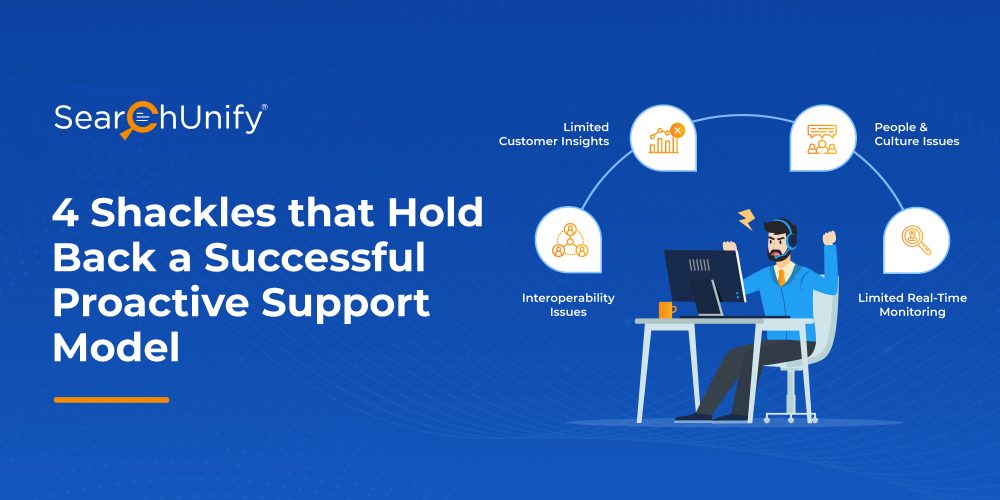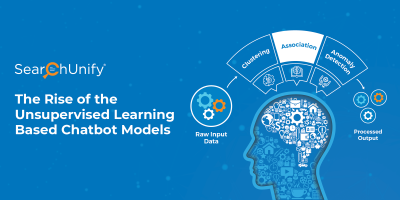
I was frustratingly trying to connect my smart T.V. to Netflix yesterday when that little circle kept rolling, trying to load. Then, an error code popped up with the hideous ‘please try again in some time’ message. In less than a minute, my iPhone chimed with a new notification: an email that read “Trouble watching Netflix? Here’s how to fix the error you may have seen.”
See what Netflix did there?
Forget about assisted service, Netflix didn’t even let me go to its help or self-service page. Now, that is what you call a proactive approach. Leading research and advisory firms like Gartner have said this time and again that organizations need to shift from a reactive to a proactive customer service approach.
Amazingly, a survey of more than 6,000 customers revealed that only 13% receive proactive customer service. This is baffling because it’s no secret that proactive support results in a full point increase in Net Promoter Score (NPS), Customer Satisfaction (CSAT) Score, Customer Effort Score (CES), and Value Enhancement Score (VES). Yet, it is hard to come by. This leads to the biggest question.
Why are Support Teams Still Delivering Reactive Support?
1. Interoperability Concerns
Interoperability in the context of support and services mean that different systems and platforms in your tech stack can communicate and exchange information with ease. The changing business requirements always need companies to keep adding the latest tools for convenience. Look at all the new apps you had to introduce in your ecosystem due to the COVID pandemic.
More apps and features mean more scattered data. Organizations make the rookie mistake of investing in stand-alone tools that provide insights from one or two channels to predict problems or invest in solutions for individual departments. This siloed tech adoption further hinders proactive support.
This doesn’t help in the long run because companies need to adopt a unified approach. A unified cognitive platform fetches insights from all channels and content sources so that you have a single source of knowledge and insights.
2. Limited Customer Insights
Most of the time, support teams don’t have the tools that provide customer journey insights, hence propelling reactive support. If they can only access the ticketing system, it means they cannot resolve problems before the customer connects.
Some applications provide customer journey insights such as searches, article views, clicks, etc., before customers contact support. Advanced insight engines provide rich reports and dashboards that uncover customer pain points and frictional areas. When your support team knows the areas where end-users might face issues, they can be proactive. They can send emails and other notifications highlighting potential problems they might face.
3. People & Culture Issues
Many companies do not emphasize or instill a culture of proactive support at the agent onboarding stage. As a result, there’s misalignment between agent efforts and proactive approach from the very first day.
Proactiveness in serving customers needs to come from the very top of the organization. Business leaders need to commit to this vision and actively articulate it to the managers, who then communicate the same to the team leads, and so on. There are more chances of support agents being proactive if they realize the impact they have on the larger organizational goal.
4. No Real-Time Customer Monitoring
Real-time support is no longer a buzzword. You’ll see this word almost everywhere now because customers are now restless and expect help on the fly.
There are plenty of solutions available in the market that help monitor customer behavior on websites and social networks in real-time. Google Analytics tells you the scroll depth, meaning the point up to which the viewer scrolled and then left the page. Similarly, some tools monitor end-user click behavior. You can leverage these nifty add-ons to provide proactive as well as in-moment assistance to your customers.
Where Do You Go From Here?
Now, you know about the main challenges in the way of providing proactive customer support and got some tips on how you can overcome them. But a lot of those tips involve leveraging the right technology. In today’s crowded marketplace, which technology do you opt for? Which vendor can you trust? It can be tricky.
Investing in a unified cognitive platform is a safe bet on any given day. Here’s why: this model fuels unification of disparate data silos to build a centralized content repository and an insights engine that articulates analytics to monitor KPIs and react to changing trends in real-time. The best part is it integrates with your existing tech stack. So, you don’t have to redesign the entire workflow. Need more information?
Attend Our Session on Enabling Proactive Support with Cognitive Technology at TSIA Interact 2021 on May 6
Crack the code to proactive support and the role of cognitive technology in enabling it. The session will also answer any questions you might have. The broad themes to be covered include:
- Understanding the evolution of customer support from reactive to proactive models
- Role of a unified cognitive platform in powering synchronous real-time customer support
- Secret to seamless integration of a cognitive platform on top of your existing support stack
So what’re you waiting for? Click here to register for it today. Hurry, the seats are filling fast.














